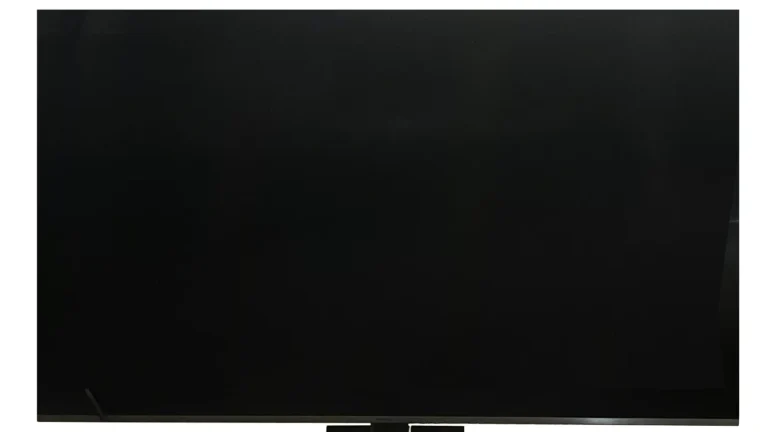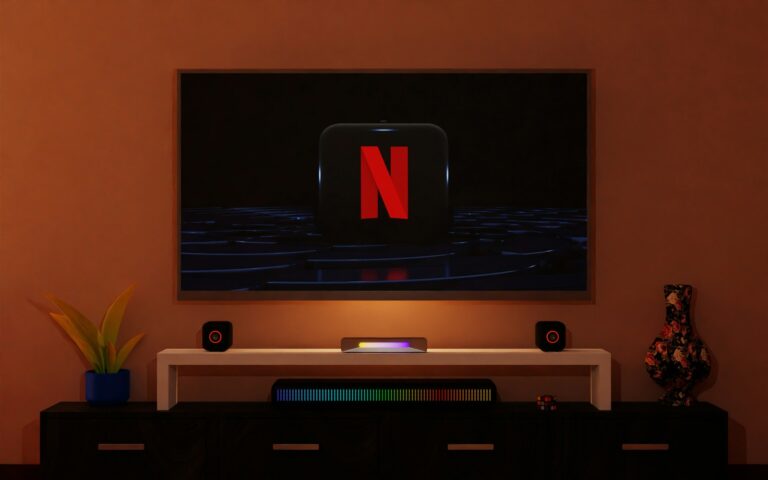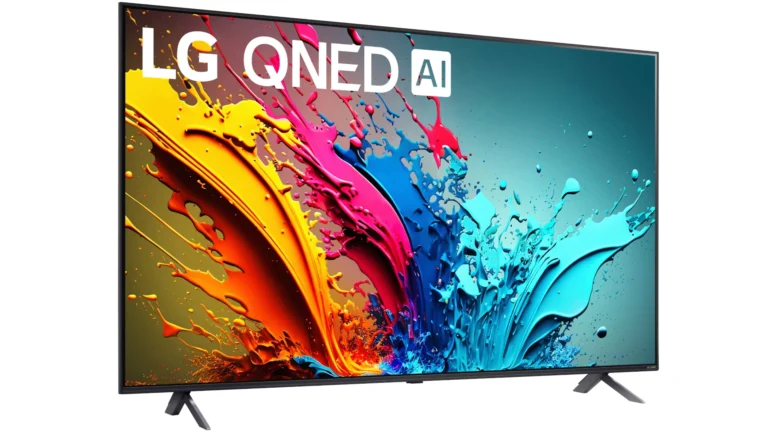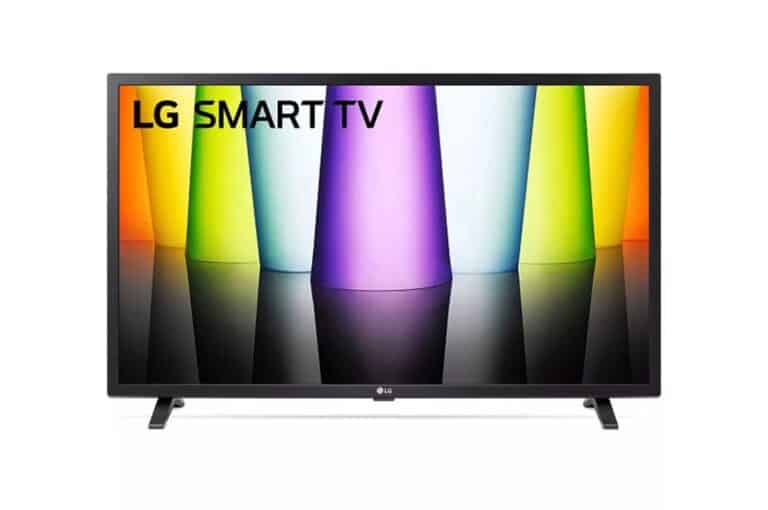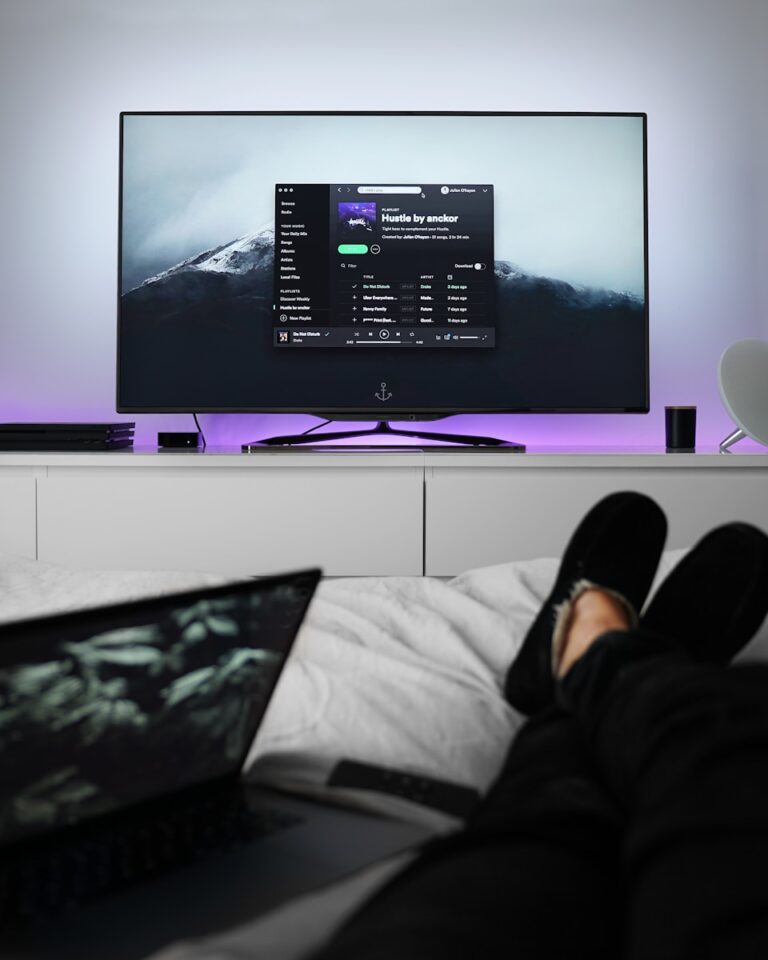
Is your LG OLED TV acting up or running slow? Sometimes all it needs is a simple restart to fix performance issues and get it working smoothly again. Restarting your LG OLED TV is as simple as pressing and holding the power button on the TV itself for about 10 seconds until it powers off and back on. This quick fix often resolves common problems like frozen screens, unresponsive apps, or sluggish performance.
Many people don’t realize that smart TVs, like computers, benefit from occasional restarts. Your premium LG OLED can accumulate temporary files and memory issues during extended use. A proper restart clears the TV’s memory cache and refreshes its operating system, potentially solving buffering issues or app crashes without requiring a full factory reset.
How to Restart and Troubleshoot An LG OLED TV
LG OLED TVs offer stunning picture quality but, like any electronic device, they can sometimes experience issues such as freezing, lagging, or connectivity problems. This guide provides easy steps to restart and troubleshoot your LG OLED TV to get it back to optimal performance.
How to Restart Your LG OLED TV
Soft Restart (Power Cycle)
A soft restart helps resolve minor glitches without affecting your settings.
- Using the Remote:
- Press and hold the Power button on your remote until the TV turns off and then turns back on.
- Alternatively, press the Power button once to turn off the TV, wait about 30 seconds, and then press it again to turn it back on.
- Using the Power Button on TV:
- Press and hold the physical power button on the TV for about 5-10 seconds until it restarts.
- Unplug and Replug:
- Turn off the TV and unplug it from the power outlet.
- Wait for about 60 seconds.
- Plug it back in and turn on the TV.
This method clears temporary software issues and refreshes the TV’s system.
How to Perform a Hard Reset (Factory Reset)
If problems persist, a factory reset restores the TV to its original settings.
- Press the Settings button on your remote.
- Navigate to All Settings > General > Reset to Initial Settings.
- Confirm the reset and follow on-screen prompts.
Note: This will erase all your personalized settings, apps, and account information.
Common LG OLED TV Issues & Troubleshooting Tips
| Issue | Possible Cause | Troubleshooting Steps |
|---|---|---|
| TV is unresponsive or frozen | Software glitch or overload | Perform a soft restart or power cycle as described above. |
| TV won’t turn on | Power supply or hardware issue | Check power cable and outlet; try unplugging and replugging; if still no power, contact support. |
| No sound or distorted audio | Audio settings or HDMI issue | Check audio output settings; try different HDMI cables or ports; restart TV and audio devices. |
| Wi-Fi or network connection issues | Router or network problems | Restart your router; reconnect to Wi-Fi on the TV; check for software updates. |
| Apps not loading or crashing | App glitches or outdated software | Update apps and TV firmware; restart the TV; reinstall problematic apps if possible. |
Additional Tips
- Keep Software Updated:
Regularly check for firmware updates via Settings > All Settings > Support > Software Update to ensure your TV runs smoothly. - Use Quick Help:
LG TVs have a Quick Help feature accessible from the settings menu for guided troubleshooting. - Remote App:
Use the LG TV Plus app on your smartphone for remote control and additional troubleshooting options.
By following these steps, you can quickly restart and troubleshoot your LG OLED TV to resolve common issues and enjoy uninterrupted viewing.
Key Takeaways
- Holding the power button on your LG OLED TV for 10 seconds performs a full restart that resolves many common issues.
- Regular restarts help maintain optimal performance of your smart TV by clearing temporary memory and refreshing the system.
- Alternative restart methods include using the power cycling technique or accessing reset options through the WebOS menu.
Understanding Your LG OLED TV
LG OLED TVs combine cutting-edge display technology with an intuitive operating system to deliver exceptional viewing experiences. These premium televisions offer stunning picture quality and smart features that enhance everyday entertainment.
Features and Technologies
LG OLED TVs use self-lighting pixels that turn on and off individually, creating perfect blacks and infinite contrast. This technology allows for more accurate colors and wider viewing angles compared to traditional LED TVs.
Most LG OLED models support multiple HDR formats including HDR10 and Dolby Vision, which enhance brightness and color range for more realistic images. The result is more detail in both bright and dark scenes.
OLED displays eliminate motion blur with fast response times, making them ideal for watching sports or playing video games. The absence of a backlight also allows for remarkably thin designs.
Recent models incorporate AI processors that automatically adjust picture and sound settings based on content type and viewing environment. These processors upscale lower-resolution content to near-4K quality.
WebOS 24 Platform
The WebOS 24 platform serves as the brain of modern LG OLED TVs, providing a user-friendly interface for accessing content. Navigation feels smooth with the Magic Remote that works like a pointer on screen.
WebOS offers easy access to streaming apps including Netflix, Amazon Prime, and Disney+. The home dashboard allows users to control smart home devices directly from the TV.
LG Channels provides free streaming content with hundreds of channels spanning news, sports, and entertainment. No subscription is required to access this growing collection of content.
The platform includes voice control compatibility with Google Assistant and Amazon Alexa. Users can search for content, control playback, and adjust settings using simple voice commands.
WebOS 24 receives regular updates to improve functionality and add new features, ensuring the TV remains current for years after purchase.
Preparation for Restarting Your TV
Before attempting to restart your LG OLED TV, taking a few preparatory steps can save time and prevent potential issues. The right preparation ensures that the restart process goes smoothly and effectively addresses any problems.
Check Connection Stability
First, verify that your LG TV is properly connected to a power source. The power cord should be firmly plugged into both the wall outlet and the TV. Try using a different wall outlet if you suspect power supply issues.
Check all HDMI connections if you’re experiencing display problems. Loose cables can cause screen flickering or no-signal errors. For networked TVs, ensure your Wi-Fi connection is stable by checking the network settings on your TV menu.
If you use external devices like streaming sticks, game consoles, or sound systems, verify these connections as well. Sometimes what appears to be a TV issue is actually a problem with a connected device.
Note the current state of your TV before restarting:
- Is it completely unresponsive?
- Does it turn on but show a black screen?
- Are certain apps crashing?
This information helps identify if the restart solved your specific problem.
Identifying Common Issues
LG OLED TVs may experience several common problems that a restart can fix. Slow performance or lagging is frequently reported, especially when streaming content or navigating through menus. App crashes or freezes might occur after prolonged use.
Sometimes the TV becomes unresponsive to remote commands or shows strange behavior with the WebOS interface. Audio issues like no sound or intermittent sound can also plague these models.
Network connectivity problems often manifest as apps failing to load or streaming services buffering constantly. These connectivity issues typically indicate your TV needs a restart to refresh its connection.
Smart TV features might stop functioning properly after system updates or when cached data builds up. If your TV responds slowly when switching inputs or opening apps, a restart will likely help clear temporary memory.
Restarting Your LG OLED TV
Restarting an LG OLED TV can solve many common issues like slow performance, freezing, or app problems without losing any settings or data. The process is straightforward and can be done in multiple ways depending on your situation.
Soft Restart Process
The simplest way to restart your LG OLED TV is through a soft restart. This method refreshes the WebOS operating system without unplugging the TV.
Using the remote control:
- Press the Home button on your remote
- Navigate to Settings (gear icon)
- Select “All Settings”
- Go to General > System
- Choose “Restart”
If your remote isn’t working properly, you can restart the TV using the physical power button on the device itself. Simply press and hold the joystick control (power button) for about 10 seconds. The TV will turn off and then automatically restart.
This soft restart clears temporary files and refreshes the operating system without changing any of your settings or preferences.
Forced Restart Method
When your LG OLED TV becomes completely unresponsive or the soft restart doesn’t resolve the issue, a forced restart may be necessary.
Power cycle method:
- Turn off the TV using the power button
- Unplug the power cord from the wall outlet
- Wait 30 seconds (this allows the capacitors to fully discharge)
- Plug the power cord back in
- Turn the TV on
For more stubborn problems, you might need to perform a full restart which will refresh all system components. Some LG OLED models have a hidden service menu that technicians use, but accessing this incorrectly can cause problems with your TV settings.
If issues persist after multiple restart attempts, you might need to consider a factory reset. This would return the TV to its “initial settings” but will erase all your personalized settings.
Settings and Adjustments Post-Restart
After restarting an LG OLED TV, users should optimize their settings to ensure the best viewing experience. These adjustments help maximize picture quality and ensure all connectivity features work properly.
Adjusting Picture Settings
LG OLED TVs offer extensive picture customization options that may need adjustment after a restart. Users should first check if their preferred picture mode is active by pressing the Settings button on the remote and navigating to the Picture menu.
For optimal HDR content viewing, the TV should have HDR mode enabled. This setting is typically found under Picture > Additional Settings > HDR Mode. When watching content with Dolby Vision, users can select between different Dolby Vision profiles like Cinema, Gaming, or Vivid.
The OLED Light/Brightness setting affects overall picture brightness and should be set between 80-100 for HDR content and 50-70 for standard viewing in dimmer rooms.
Logo Brightness Adjustment helps prevent screen burn-in:
- Low: Minimal reduction
- Medium: Moderate reduction
- High: Maximum protection
Multi View functionality may need to be reconfigured after a restart. This feature allows users to watch two content sources simultaneously and can be accessed through the Home menu or dedicated remote button.
Setting Up Connectivity Options
Wi-Fi connections might need to be re-established after a full TV restart. Users should navigate to Settings > Network > Wi-Fi Connection and select their network. For stable streaming, using a 5GHz connection when available is recommended.
Bluetooth devices may need to be paired again. This process involves going to Settings > Connection > Bluetooth and putting the external device in pairing mode.
HDMI-CEC settings control how connected devices interact with the TV. These settings should be enabled to allow automatic switching between sources and using the TV remote to control other devices.
For smart home integration:
- Google Assistant requires going to Settings > General > AI Service
- Amazon Alexa setup is found under Settings > Connection > Voice Recognition
Port assignment is important for gaming consoles or PCs. HDMI ports should be configured for the correct usage type (PC, Game Console, etc.) to ensure proper refresh rates and latency settings.
Advanced Troubleshooting
When standard restart methods don’t resolve issues with your LG OLED TV, more specialized approaches may be necessary. These techniques can help address persistent problems that regular troubleshooting can’t fix.
Accessing the Service Menu
The service menu on LG OLED TVs provides access to advanced settings not available in the regular menu system. To access this menu, turn off your TV and press the following button sequence on your remote: Menu + 0, 0, 0, 0. Some newer models might require a different combination like Menu + 1, 1, 0, 5.
Be extremely cautious when navigating the service menu. Changing settings here can permanently damage your TV or void your warranty if used incorrectly.
The service menu allows technicians to:
- Perform factory resets
- Run diagnostic tests
- Calibrate display settings
- Update firmware manually
Only use the service menu if you’re confident in what you’re doing. It’s recommended to take photos of original settings before making any changes.
Contacting Customer Service
When advanced restart methods and the service menu don’t solve your problem, contacting LG customer service is the next step. LG offers multiple support channels for OLED TV owners.
You can reach LG support through:
- Phone: 1-800-243-0000 (US)
- Live chat on LG website
- Email support forms
- Social media channels
Before contacting support, gather your TV’s model number, serial number, and purchase date. These details help representatives provide faster, more accurate assistance.
Document any error messages and exactly when problems occur. This information helps technicians diagnose issues more efficiently.
For warranty service, keep your original receipt and be ready to describe troubleshooting steps you’ve already tried to avoid repeating basic solutions.
Gaming and Entertainment Optimizations
LG OLED TVs offer specialized features that enhance both gaming and entertainment experiences. These optimizations can significantly improve visual quality and responsiveness when properly configured.
Activating Game Mode Features
LG OLED TVs include a dedicated Game Optimizer that reduces input lag and enhances gaming performance. To access this feature, press the settings button on the remote and select All Settings → General → Game Optimizer → ON.
Game Optimizer provides several key benefits:
- Input lag reduction – crucial for competitive gaming
- VRR support – compatible with both Nvidia G-Sync and AMD FreeSync technologies
- HDMI 2.1 functionality – enabling 4K gaming at 120Hz
The Game Dashboard gives quick access to relevant settings during gameplay. Connect your game systems or gaming laptop through HDMI ports labeled 1-4, with ports 1 and 2 typically offering the full HDMI 2.1 bandwidth needed for high-end gaming.
After making changes, a quick restart may be needed for optimal performance. Simply hold the power button on the TV for about 10 seconds to reset these settings.
Enhancing Entertainment Experience
For non-gaming entertainment, LG OLEDs offer picture presets optimized for different content types. The Cinema or Filmmaker Mode provides the most accurate colors for movies, while Sports mode enhances motion clarity.
To maximize your viewing experience:
- Adjust TruMotion settings for smoother playback of sports or action content
- Enable Dolby Vision IQ to automatically adjust picture settings based on ambient light
- Configure AI Sound Pro for optimized audio based on content type
Sometimes these features may cause the interface to become sluggish. If this happens, pressing and holding the joystick control on the TV for a few seconds will restart the system without changing your settings.
For streaming apps that seem unresponsive, try closing background applications first before performing a restart. This helps maintain optimal memory usage and prevents unnecessary system lag.
Connectivity and Peripheral Devices
LG OLED TVs offer multiple connection options for external devices, ensuring you get the most out of your viewing experience. These connections allow for seamless integration with various entertainment sources while maintaining the TV’s superior picture quality.
Connecting External Devices
LG OLED TVs support a wide range of external devices through various ports. Most models feature multiple HDMI ports, USB connections, optical audio outputs, and ethernet ports for wired internet.
To connect smartphones, simply use screen mirroring through the TV’s built-in features. Android devices can connect using Screen Share or the LG ThinQ app, which allows for remote control functionality as well.
For e-readers and other USB devices, connect them to the TV’s USB ports. The TV will recognize compatible files and allow you to browse through documents and media.
Printers cannot connect directly to LG OLED TVs, but you can print screen captures by sending them to your mobile device first using the SmartShare feature.
UK electronics typically work perfectly with LG TVs, though you may need to adjust the input settings for certain devices in the Home Dashboard menu.
Utilizing HDMI Inputs for Enhanced Quality
HDMI connections provide the best quality for most external devices. LG OLED TVs typically include multiple HDMI inputs with at least one supporting HDMI 2.1 for enhanced features.
For optimal performance, use the designated HDMI ports labeled for specific purposes:
- HDMI eARC/ARC: Connect soundbars or audio receivers
- HDMI 2.1 ports: Connect next-gen gaming consoles for 4K/120Hz gameplay
- Standard HDMI: Connect cable boxes, streaming devices, and Blu-ray players
When connecting game consoles or high-end PCs, navigate to the TV settings and enable Game Optimizer mode on that specific HDMI input. This reduces input lag and enhances gaming performance.
For 4K content, make sure to use high-quality HDMI cables rated for 18Gbps or higher. Lower quality cables may cause signal dropouts or prevent certain features from working properly.
Frequently Asked Questions
LG OLED TVs sometimes need to be restarted to fix common issues like app freezing, slow performance, or connectivity problems. These methods range from simple remote control sequences to physical power cycling techniques.
What is the procedure to soft reset an LG OLED television using the remote control?
To soft reset an LG OLED TV using the remote, press and hold the power button on the remote for about 5 seconds. This triggers a restart without changing any settings.
Another method involves pressing the Home button, navigating to Settings > General, and selecting the Restart option if available on your model.
Some users report success by turning off the TV’s privacy policy temporarily in Settings > General > User Agreements, which forces the system to restart.
How can one perform a factory reset on an LG TV when the screen is not functioning?
When the screen isn’t working, factory reset the TV by locating and pressing the power button on the TV itself for about 10 seconds until it powers off and on again.
If that doesn’t work, unplug the TV completely for at least 60 seconds before plugging it back in to clear the internal memory.
For persistent issues, try the hard reset option by navigating to Settings > General > Reset to Initial Settings using the TV’s joystick control if the remote isn’t working.
What steps are needed to restart an LG Smart TV?
The quickest way to restart an LG Smart TV is to hold the power button on the TV for about 10 seconds until it shuts down and restarts.
Alternatively, unplug the TV from the power outlet, wait 30 seconds, and plug it back in for a complete power cycle.
For WebOS TVs, press the Home button, go to Settings > General, and select the Restart option if available on your model.
What is the method to restart an LG G3 TV?
LG G3 OLED TVs can be restarted by pressing and holding the power button on the remote control until a restart menu appears, then selecting “Restart.”
If no menu appears, press the physical power button on the TV itself for about 10 seconds until it turns off and back on automatically.
For system-related issues, navigate to Settings > All Settings > General > Reset to Initial Settings for a more comprehensive restart.
How can one reboot an LG TV to apply updates?
To apply updates, go to Settings > All Settings > General > About This TV > Check for Updates, then follow the prompts to download and install.
After installation, the TV will usually restart automatically to apply the updates properly.
If it doesn’t restart automatically, manually reboot the TV by holding the power button on the remote or TV for 10 seconds.
What are the instructions for power cycling an LG OLED TV if the remote is unavailable?
Locate the physical power button on the TV, which is typically found under the front center, at the bottom edge, or behind the right or left side of the screen.
Press and hold this button for approximately 10 seconds until the TV shuts down completely and then restarts.
If a simple restart doesn’t resolve the issue, try a full power cycle by unplugging the TV from the wall outlet, waiting for one minute, then plugging it back in and pressing the power button once.

